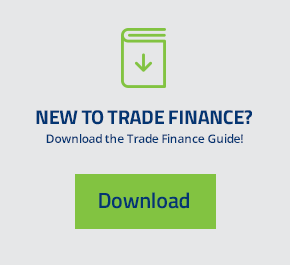So you are a domestic business, and you have found a foreign buyer for your product or service.
The buyer seems trustworthy enough, but you still need to be sure that agreements are arranged so that your firm gets paid in full and on time for each export sale. You know what recourse is available for deals in the U.S., including for credit default or bankruptcy, but internationally things can be a lot different. What if your foreign buyer’s business goes bankrupt? What if there is political volatility? What happens if a shipment is lost upon delivery? To the uninitiated, export finance problems like these can seem overwhelming. Luckily enough, there are options available to you!
Cash-in-Advance
How it works: The seller requires receipt of payment from the buyer before shipping the goods.
Sounds great right? They pay you up front, and you send the product with no risk since you’ve already received payment. For you as the exporter this is the most desirable method of payment, but to your foreign buyer it is the most risky. Depending on your industry, and demand for your product, you may be able to use cash in advance. More often than not, you will be competing with other sellers to close a sale; making cash in advance the least attractive payment term to offer to a foreign buyer—meaning you could lose the sale to another enterprise.
Letters of Credit (LCs)
How it works: A Letter of Credit is basically a contract, moderated by a bank, where the foreign buyer gives the payment to their bank, and the bank holds that payments until after the terms and conditions stated in the sales contract have been met.
After paying with cash in advance, using a Letter of Credit (LC) is one of the most secure tools an exporter can leverage to ensure payment. An LC is useful when reliable credit information about a foreign buyer is difficult to obtain, but the exporter is satisfied with the creditworthiness of the foreign buyer and the buyer’s bank.
The upside to a LC is that the risk of payment is pushed off to the foreign buyers bank, who makes sure everyone stays honest.
The down side is that LCs can get very complicated and usually rely on an in-depth understanding of international trade terms to make them work. Also, they don’t come cheap.
Documentary Collections
How it works: First as an exporter you ship the goods. Then you give your bank the shipping documents, invoice, and instructions to release the documents to the buyer upon payment. Those documents are sent to a bank in the foreign buyer’s country. The foreign buyer pays the invoice to the bank in their country, and the documents are released. Finally, the foreign buyer uses those documents to take ownership of the goods, and the payment is sent back to you the exporter.
Basically, you use your banks as a collection agent, with the goods being held until payment is made. There are a number of benefits here. Like an LC this is a very secure way to do a deal. If the foreign bank trusts the buyer there may be room to work attractive payment terms into the deal. It is also usually less expensive than a LC. The downside is that there are still a lot of participants, and the details can become very complicated very quick. Meaning if you don’t have the experience to manage the details you will probably need to hire that experience. Also, if you are not confident that your foreign buyer will pay, you could get stuck with your goods in a faraway port.
Open Account
How it works: A sale where the goods are shipped and delivered before payment is due, and the buyer is usually given between 30 and 90 days to pay.
For domestic sales, selling with open account terms is often time the norm. When you know what your legal recourse is, extending your buyers payment out a month or two can make your product more attractive and help close the sale. Internationally it works the same way. Foreign buyers often press exporters for open account terms, and it may even be a requirement in order for you to win a sale in competitive circumstances. For many exporters the risk of nonpayment or international default is too great, so they don’t even compete for the sale. That is, until they learn about Trade Credit Insurance (TCI). Also called nonpayment insurance, TCI is an insurance policy that you buy to insure your international accounts receivables, covering the value of your sale to a foreign buyer in the event of a default.
These descriptions are obviously simplified and do not cover the entire spectrum of how payments could be made internationally. Reality is always more complicated!
Learn more about the financial options available to you as a U.S. exporter by downloading the U.S. Department of Commerce’s Trade Finance Guide: A Quick Reference for US Exporters.
